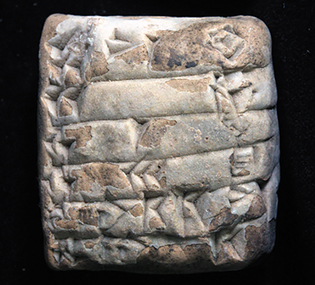 loading
loading
FindingsNotedA hallmark of alzheimer’s disease is progressive loss of synapses, the com-munications junctions that link the brain’s nerve cells. Until now, the damage could be seen only with an autopsy. But Ming-Kai Chen, a Yale associate professor of radiology and biomedical imaging, and his team have made a breakthrough: they’ve found a non-invasive way to spot synaptic loss at any stage. The team at Yale PET center designed a chemical that binds to a protein in synapses and can be detected with a PET scan. In JAMA Neurology, they described seeing a 41 percent decline in the synaptic density of the hippocampus (a key memory center) in patients who had mild cognitive impairment or early Alzheimer’s. The process may help scientists to learn how the disease progresses over time—and to develop therapies that “target the preservation and restoration of synapses.”
 Eckhart FrahmView full imageLast May, the US returned a trove of looted antiquities to Iraqi officials—thanks, in part, to Yale professor Eckart Frahm. In autumn 2016, Homeland Security took Frahm, who is an Assyriologist and an expert in cuneiform, to a New York City warehouse. There he had just two and a half days to examine some 250 pocket-sized clay tablets that had been seized by customs. Frahm was able to authenticate all but a tiny fraction; he concluded that they came from southern Iraq and are between 2,500 and 4,500 years old. Many are from the “lost city” of Irisagrig, whose precise location is unknown.
Want to know how many years you really have left? A new test, based on a suite of routine blood-test measures, can determine what School of Medicine assistant pathology professor Morgan Levine calls Phenotypic Age (PA): a reflection of biological aging rather than the number of candles on your birthday cake. In pre-publication research posted online in bioRxiv, Levine’s team used a large federal health database to show that if a person’s PA was significantly greater than their chronological age, the likelihood of disease and death increased correspondingly. The researchers say this biological crystal ball may identify individuals earlier who appear healthy but are actually at higher risk—giving them a chance to get help preventatively.
The comment period has expired.
|
|